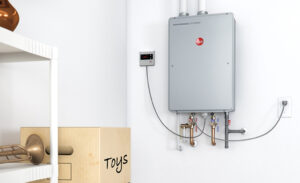There’s a sense of accomplishment when the final box is placed inside your new home. You’ve survived the packing process, navigated the moving day logistics, and now face the next phase: unpacking. While this stage may seem less stressful on the surface, it carries its own challenges. The process of settling in can either feel liberating or overwhelming, depending on how you approach it. To ensure your move concludes with grace and clarity rather than chaos, here are ten expertly crafted unpacking tips designed to elevate the experience and help transform your new house into a functional, organized, and comforting home.
1. Begin with a Clean Slate
Before opening even a single box, take a moment to clean your new space thoroughly. It’s far easier to wipe down cabinets, sweep floors, or dust baseboards before your belongings are in place. A clean environment helps create a fresh mental reset and allows you to unpack into an uncluttered and hygienic space. Think of it as preparing the canvas before the paint—your belongings will settle better when the foundation is pristine.
2. Unpack Essentials First
Hopefully, during the packing process, you prepared an “essentials” box or suitcase containing must-haves for the first 24 to 48 hours—items like toiletries, basic kitchenware, medications, a change of clothes, chargers, and important documents. Prioritize this box and set up the areas you’ll need immediately, such as the bathroom and bedroom. This small but powerful step prevents frantic searching and gives you comfort and functionality right away.
3. Use a Room-by-Room Strategy
Rather than bouncing from one room to another, commit to finishing one space at a time. This structured approach keeps the process manageable and helps avoid a home full of half-opened boxes. Start with the kitchen or bedroom—whichever will make daily life easier—and work systematically through the rest of the house. Each completed room provides a sense of progress and boosts morale.
4. Focus on Function First, Aesthetics Later
When unpacking, it’s tempting to style every bookshelf or perfect every picture frame immediately. Resist the urge. Instead, focus on setting up spaces to be practical and livable. Organize your kitchen so you can cook meals, arrange your bedroom so you can sleep comfortably, and ensure your living room allows for relaxation. Once the home functions smoothly, you can circle back to refine décor and layout with a clearer vision of how the space works in practice.
5. Use Labels and Inventory Wisely
If your boxes are clearly labeled and you created an inventory list during packing, now is the time to put that forethought to good use. Cross-reference labels with each room and prioritize boxes based on their contents. A well-labeled box system reduces guesswork and speeds up the process, ensuring fragile items are handled carefully and necessities aren’t overlooked.
6. Break Down Boxes as You Go
Nothing clutters a new home faster than piles of empty boxes and crumpled packing paper. As you unpack, flatten and recycle boxes immediately or designate an out-of-the-way spot to collect them. This small habit maintains a tidy environment and provides a clearer view of what’s been completed. It’s also satisfying in its own right—a visual marker of progress.
7. Create “Drop Zones” for Miscellaneous Items
There will inevitably be items that don’t yet have a designated place: random cords, small decorative pieces, or items you’re unsure about keeping. Rather than letting these pieces scatter across countertops, create a few “drop zones”—temporary holding areas where they can stay organized until you’ve decided their final home. This prevents clutter from taking over and gives you mental breathing space.
8. Take Breaks and Pace Yourself
Unpacking can be deceptively exhausting, especially after the physical and emotional strain of moving. Pace the process to prevent burnout. Set daily goals—perhaps one room or a few boxes per evening—and allow yourself time to enjoy your new space. It’s not a race. By moving intentionally, you’ll make better decisions and enjoy the transition more thoroughly.
9. Get Rid of Packing Fatigue Clutter
Not everything that arrives at your new home deserves to stay. The act of packing often uncovers forgotten items, and unpacking offers a final opportunity to reevaluate. If you find duplicates, outdated gadgets, or pieces that no longer suit your life, set them aside for donation or disposal. Decluttering as you unpack creates a lighter, more refined home environment and helps avoid recreating past messes.
10. Make the Final Touches Count
Once the major unpacking is complete, take time to personalize. Hang art, arrange plants, display mementos—these finishing touches breathe life into the home. Surround yourself with items that bring joy, familiarity, and comfort. It’s this final stage where the transition from “new house” to “my home” truly occurs.
In essence, unpacking isn’t just about putting things away—it’s about shaping a space that reflects your lifestyle, your routines, and your personal essence. Done with intention, the process can be not only efficient but also deeply rewarding. It’s a chance to curate your home anew, to let go of what no longer serves you, and to embrace the next chapter with clarity and purpose.
Above all, give yourself the grace to adjust. No home settles overnight. It evolves. Let the unpacking process be an unfolding, rather than a chore—a gentle settling into your new life, one thoughtful step at a time.
















